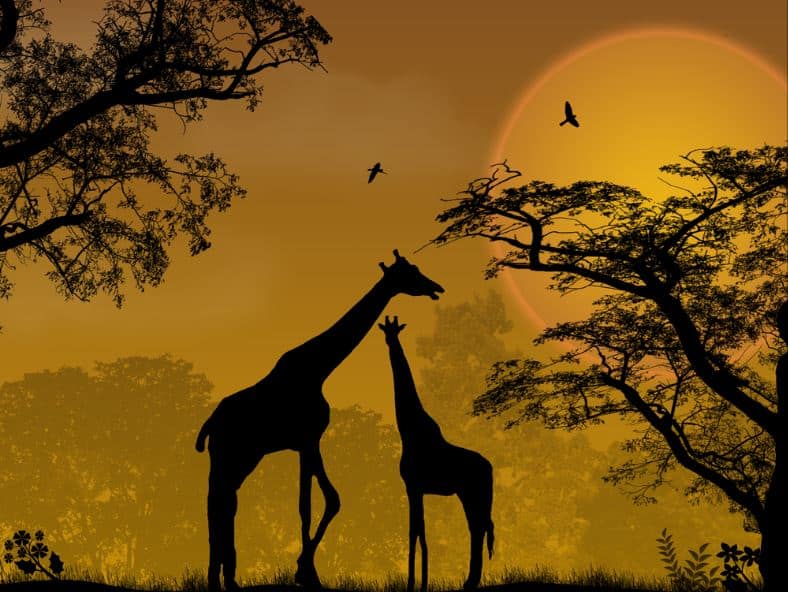Africa – The Language Professional’s Dream Continent
What do Arabic, French, English, Spanish, Portuguese, Afrikaans, Swahili, Wolof and Amharic all have in common? They are all languages spoken in Africa, and this list doesn’t even begin to cover all the myriad of smaller subsets of various language and indigenous languages and dialects that pepper this vast continent – There are thousands! Indeed, Africa Language Professionals Dream Continent.
It’s not surprising that so many languages are spoken in a single continent when you consider that the land mass is 11,730,000 square miles. Since that is rather difficult for the human mind to visualize, you can think about the fact that the African continent is larger than the combined land masses of the contiguous United States, Asia, India and most of the European continent.

Africa, language professional’s dream continent
Simply put, Africa is a linguist’s dream continent. As you can imagine, those of us who love languages are equally enamored with its rich cultural layers. Every country is completely different from its neighbor to the north, south, east or west. Even if you aren’t a geography buff, consider the images that come to mind when you read names of countries like Morocco, Algeria, Tunisia, or Egypt. Then, compare those with the images or impressions you get when you hear words like Ethiopia, Rwanda, Ghana – and then there is South Africa.
Most people will have very different associations with each region, and those are as tangible in person and reality as they are on the typed page.
From Mediterranean to Saharan, from coastal to jungle, from mountain ranges to deep valleys, Africa’s cultural tapestry is as varied and interesting as its topography, and this is another reason why linguists can’t get enough of it.
African languages generally belong to four major language groups
Even with all those differences, you can’t have a connected body of land without some shared influences and ties, which is why the wide majority of African languages (minus those that resulted from colonization) can be divided up into four major language groups.
Afro-Asiatic
The Afro-Asiatic languages (formerly known as Hamito-Semetic languages) are spoken by more than 400 million people across northern Africa, the African Horn and stretching into Southwest Asia. The most widely known (and spoken) of these languages is Arabic.
As we mentioned in a previous blog post, Arabic is one of the most difficult languages to learn, but is worth your time since it’s also the 5th most commonly spoken language in the world. Native English speakers who also speak fluent Arabic are highly sought after in the world of translation and interpretation. Those of us who study languages are attracted to its complexity as well as its beautiful and artistically rendered written characters.
Nilo-Saharan
The Nilo-Saharan language group is spoken by groups of people (about 46 million people), that live in a central belt comprised of parts of Mali, parts of Egypt, Sudan, Chad, and Niger and also encompassing parts of Kenya, Uganda, Tanzania and the Democratic Republic of Congo.
The majority of the 130 languages in this group are contained in the Eastern Sudanic branch. Like the Chinese language and its various dialects, many of Nilo Saharan languages are tonal, with two to four tones, which add an extra layer of challenge to learn.
Niger-Congo
This is actually the largest of the African language groups, containing more than 1,000 separate languages. These languages are spoken by 60% of the African continent’s inhabitants.
Niger-Congo languages predominate in sub-Saharan Africa, from Senegal, Guinea, Sierra Leone and Liberia in the west, to Cameroon, the Central African Republic and the northern-most portion of Democratic Republic of the Congo in the east.
The language you’re probably most familiar with of this grouping is Swahili, and possibly Foola. Interestingly, while these are the two largest of the languages within the Niger-Congo group, they’re also the only ones that aren’t tonal.
Khoisan
This language group is one of the most fascinating, probably because it is the least common. The word Khoisan is interpreted as “person who forages in the bush” or “bushman,” so it makes sense that this is the smallest of Africa’s language groups, spoken by hunter-gather groups that roamed the pastoral portions of South Africa.
While Khoisan languages used to be spoken across the entire southern portion of the continent, they are now predominantly isolated in southern Angola, Namibia and Botswana. Many of the languages have been lost or are unrecognizable due to colonization and the resulting changes from tribal to more urban and “citified” ways of living. Perhaps the most unique aspects of Khoisan languages are the “click” sounds (like in Zulu) that are meaningful phonemes and represented by the symbol “!”
As you can imagine, with this variety of languages, it’s so important to work with a language services provider who is dedicated to matching you with professional, native speaker linguists, who are inherently familiar with the target language audience. Contact CCA to learn more about our African language services.






